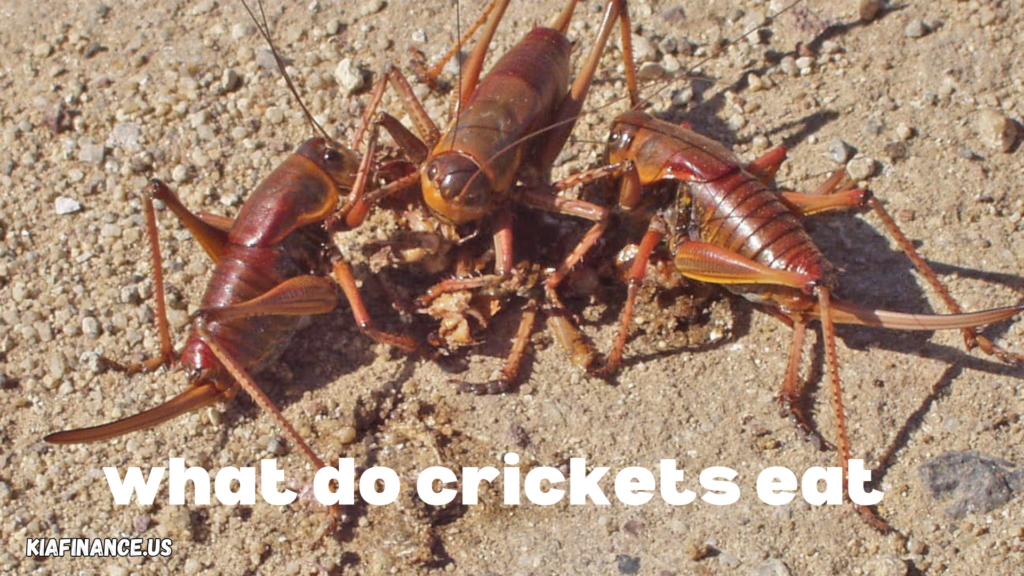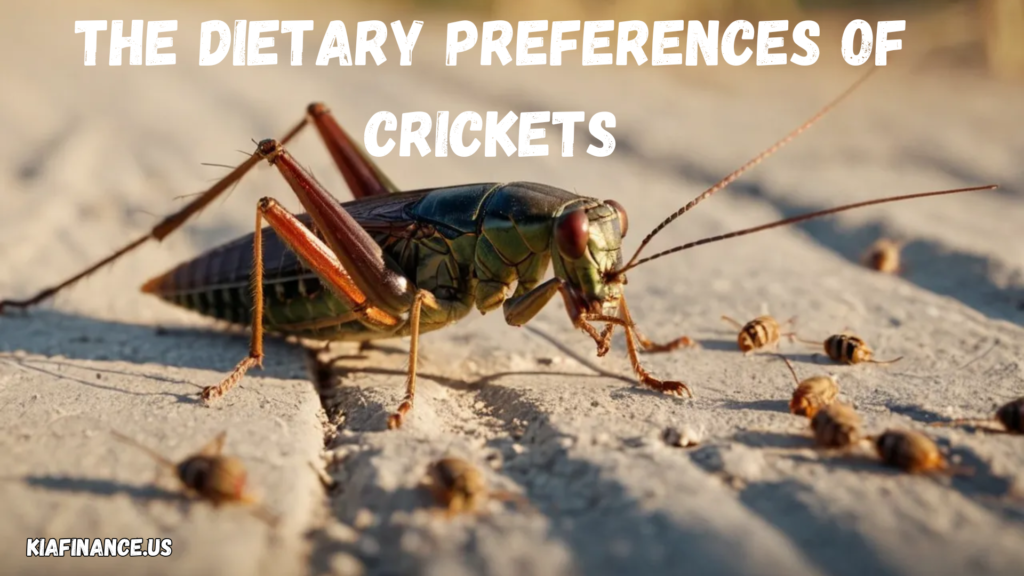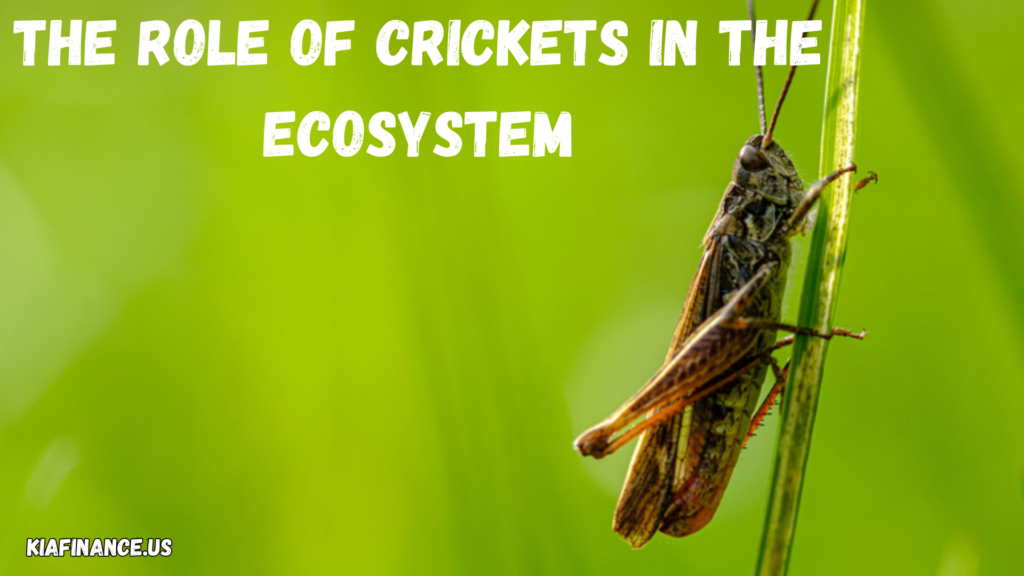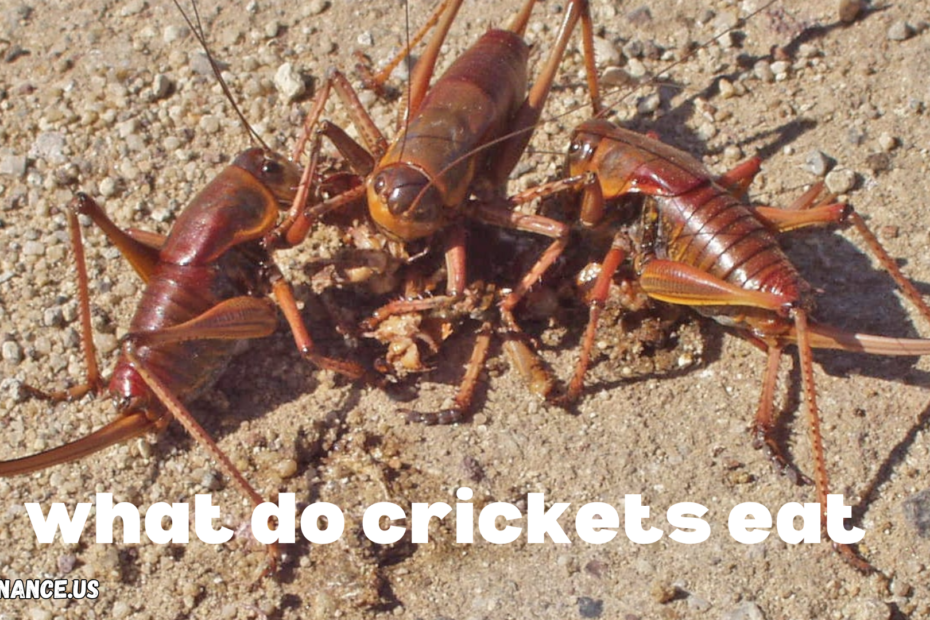
Table of Contents
Crickets are fascinating insects that play a crucial role in various ecosystems. Known for their distinctive chirping sound, these small creatures are not just interesting to observe but also serve as a significant food source for many animals, including birds, reptiles, and even humans. If you’re curious about what crickets eat, whether for personal knowledge or for feeding pets, this guide will provide an in-depth look at the dietary preferences of crickets.
Understanding Crickets
Before diving into their diet, it’s essential to understand what crickets are. Crickets belong to the family Gryllidae, with over 900 species identified globally. They thrive in diverse environments, from forests and fields to caves and urban areas. Crickets are primarily nocturnal, and their diet varies based on their habitat, species, and availability of food sources.
Physical Characteristics
Crickets are characterized by their long antennae, strong hind legs for jumping, and a cylindrical body. Their size can range from 0.5 to 3 inches, depending on the species. The most commonly recognized cricket is the house cricket (Acheta domesticus), which is often found in human habitats.
The Dietary Preferences of Crickets

Crickets are omnivorous, meaning they consume a variety of organic materials. Their diet can include:
1. Plant Material
Crickets are known to consume various plant-based foods, including:
- Leaves and Vegetation: They often feed on grasses, herbs, and other green plants. Young, tender leaves are particularly favored due to their high moisture content and nutritional value.
- Fruits and Vegetables: Crickets are known to munch on fruits like apples, bananas, and melons, as well as vegetables like carrots and leafy greens. These foods provide essential vitamins and hydration.
- Seeds and Grains: Seeds from various plants and grains like oats and corn are also common food sources. This part of their diet is rich in carbohydrates and protein.
2. Organic Matter
In addition to fresh plant materials, crickets are scavengers and will consume decaying organic matter. This includes:
- Decomposing Leaves: Crickets often feed on decomposing leaves found on the forest floor, contributing to the nutrient cycle in their ecosystems.
- Animal Remains: While not a primary food source, crickets may eat small bits of animal matter, particularly if it’s decaying. This opportunistic feeding behavior helps them survive in diverse environments.
3. Commercial Cricket Feed
For those who raise crickets, such as for pet food or research, commercially prepared cricket feed is available. This feed typically includes:
- Protein Sources: Many cricket feeds are high in protein, utilizing ingredients like soybean meal or fish meal, which are essential for growth and reproduction.
- Vitamins and Minerals: Commercial feeds often contain added vitamins and minerals to ensure a balanced diet that supports the health of crickets.
4. Water Sources
While crickets do not drink water in the same way many other animals do, they derive moisture from their food. However, in captivity, it’s crucial to provide a water source, such as damp sponges or vegetable pieces, to ensure they remain hydrated.
Nutritional Needs of Crickets
Understanding what crickets eat also involves considering their nutritional requirements. Crickets require a balanced diet to thrive, which includes:
1. Proteins
Protein is vital for the growth and development of crickets, particularly during their nymph stages. A protein-rich diet helps in building muscle and supporting reproduction. In captivity, high-protein feeds can significantly enhance their growth rates and health.
2. Carbohydrates
Carbohydrates provide energy, essential for active behaviors like jumping and mating. Seeds, grains, and fruits are excellent sources of carbohydrates in a cricket’s diet.
3. Vitamins and Minerals
Crickets need various vitamins and minerals to maintain their health. Vitamins A, B, C, D, E, and K are crucial, along with minerals like calcium and phosphorus. These nutrients support metabolic processes, growth, and overall health.
4. Fats
While crickets do not require a high-fat diet, some fats are essential for energy and nutrient absorption. A balanced intake of fatty acids can help maintain overall health.
How to Feed Crickets in Captivity
If you’re raising crickets, whether for pets, research, or personal interest, knowing how to feed them properly is crucial. Here are some tips:
1. Choosing the Right Food
- Diversity is Key: Offer a mix of fresh fruits, vegetables, grains, and protein-rich foods to ensure a balanced diet.
- Avoid Toxic Foods: Certain foods, like citrus fruits and avocado, can be harmful to crickets. Always research before introducing new foods.
2. Maintaining Freshness
Crickets thrive on fresh food. Remove any uneaten food regularly to prevent mold and bacteria growth, which can harm the crickets.
3. Hydration
Provide a source of moisture, such as damp sponges or fresh fruits and vegetables. Ensure that water is accessible but not in a form that could drown the crickets.
4. Commercial Feed
Using commercial cricket feed can simplify the feeding process. Look for reputable brands that offer a well-balanced nutritional profile.
The Role of Crickets in the Ecosystem

Crickets are more than just food; they play a vital role in the ecosystem. Their omnivorous diet helps in:
- Decomposition: By consuming decaying plant and animal matter, crickets contribute to the breakdown of organic material, enriching the soil and promoting plant growth.
- Food Chain: Crickets serve as a food source for many predators, including birds, small mammals, and reptiles, making them a crucial part of the food web.
- Pollination: Some cricket species assist in pollination as they feed on various plants.
The Future of Crickets as Food
In recent years, crickets have gained popularity as a sustainable protein source for humans. They are packed with nutrients, high in protein, and have a lower environmental impact compared to traditional livestock. Here are some reasons why crickets are considered a viable food source:
1. Sustainability
Cricket farming requires significantly less water, land, and feed compared to conventional livestock. They can be raised on organic waste products, making them an eco-friendly choice.
2. Nutritional Benefits
Crickets are rich in protein, containing essential amino acids, vitamins, and minerals. They also offer a good source of healthy fats and fiber.
3. Culinary Uses
Crickets can be ground into flour and used in various recipes, from protein bars to baked goods. Whole roasted crickets are also enjoyed as snacks in many cultures.
Conclusion
Understanding what crickets eat not only enhances our appreciation for these remarkable insects but also highlights their importance in ecosystems and as a sustainable food source. Whether you are raising crickets for pets or considering them as a dietary option, knowing their dietary preferences and needs is essential for their health and well-being.
As we continue to explore sustainable food sources, crickets may very well take center stage, bridging the gap between ecological responsibility and nutritional needs. By learning about and supporting the consumption of crickets, we can contribute to a more sustainable future.
